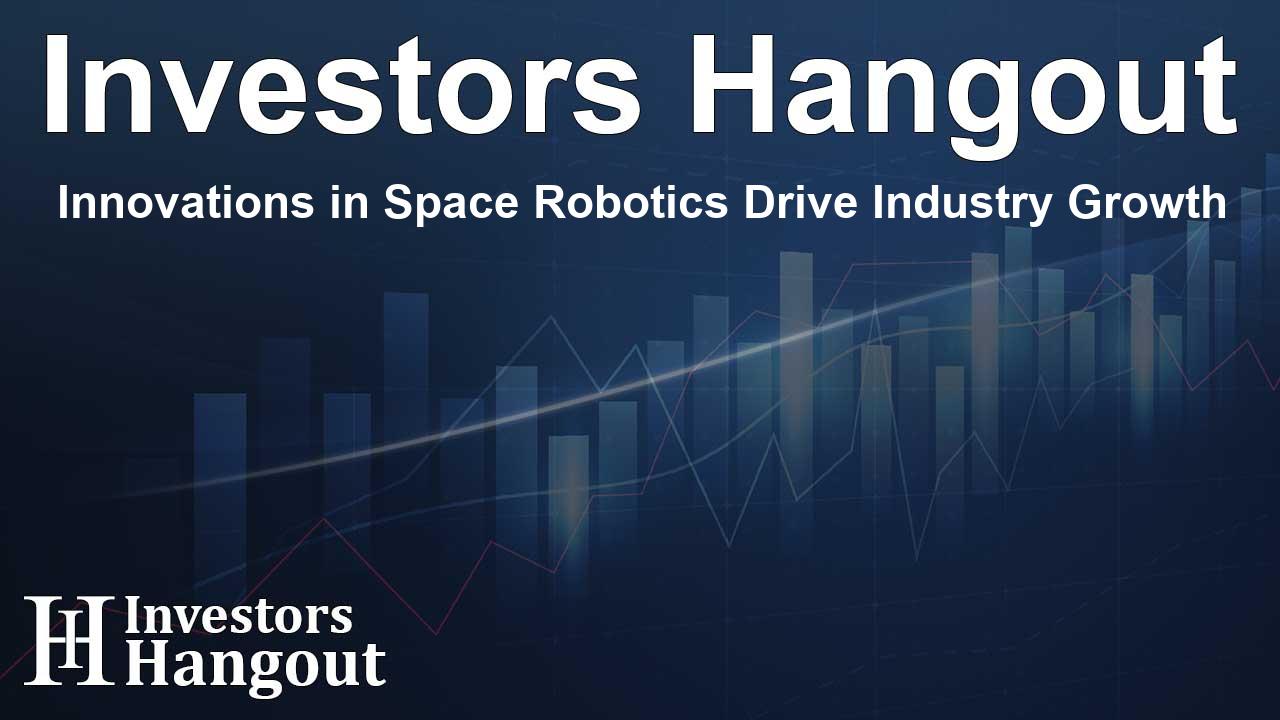Innovations in Space Robotics Drive Industry Growth

The Rise of Space Robotics Industry
Space robotics is capturing the spotlight as global investments in satellite technology grow rapidly. Known for their autonomous abilities, space robots are engineered to survive the harsh conditions of space while performing vital functions. Their versatility is evident in numerous applications, such as construction, exploration, maintenance, and service of satellites orbiting Earth and beyond.
Market Growth Factors
One major driver of this market's expansion is the increasing number of satellites being launched into orbit globally. As satellite launches rise, the demand for robotics technology to assist with on-orbit maintenance escalates. The surge in satellites has led to a more cluttered space environment, necessitating robots capable of removing orbital debris and service satellites efficiently. Robotics continually proves its merit through the successful operation of complex tasks that enhance the safety and efficiency of space missions.
Technological Advancement in Robotics
The swift advancements in robotic technologies directly contribute to their growing role in space exploration. Robotics not only assures enhanced productivity but also minimizes risks to human life in dangerous scenarios. Emerging technologies like artificial intelligence (AI) and machine learning (ML) are becoming essential tools used for managing vast amounts of satellite data, which often overwhelms human operators. The future of interplanetary exploration looks promising with expectations of multi-robot systems that can be deployed together to improve mobility and efficiency in diverse terrains.
Opportunities in Developing Economies
As emerging nations increasingly adopt automation technologies, they stand on the brink of unlocking substantial opportunities in the robotics sector. Robotics promises rapid economic advancement for these countries, improving infrastructure across healthcare, agriculture, and food industries. This emerging market offers significant growth potential as developing nations invest in AI applications to bolster their manufacturing capabilities.
Regional Insights
North America currently dominates the space robotics market, projected to grow at a compound annual growth rate (CAGR) of approximately 5.0%. This surge is largely attributed to hefty investments from government bodies like NASA, which has fostered a conducive environment for advances in robotics technologies. Notably, major aerospace entities such as SpaceX and Northrop Grumman are actively involved in developing innovative robotic solutions for upcoming space missions.
Europe's Position in Space Robotics
Europe is also seeing impressive growth in this sector, with a projected CAGR of 6.3%. The European Space Agency and various research facilities have made significant contributions to developing robotics, such as the European Robotic Arm (ERA), which will assist in assembling and maintaining structures in the International Space Station (ISS).
Market Segmentation Overview
The global space robotics market is categorized into segments based on solutions and applications. The Remote Manipulator System (RMS) holds the leading market share, forecasted to display a robust CAGR. Furthermore, in terms of applications, the near space segment captures the highest market share, reflecting its essential role in current robotics missions.
Competitive Landscape
The competition within the space robotics market is intensifying, with key players like Altius Space, Astrobotic Technology Inc., and Maxar Technologies making impactful contributions. These companies are leading innovations and providing advanced solutions that cater to commercial and governmental needs alike. The emphasis on developing lightweight and efficient robotic systems places these players at the forefront of this evolving market.
Recent Developments and Innovations
Innovation continues to reshape the space robotics landscape. For instance, recent advancements by Astrobotic Technology revealed plans for a new lunar lander capable of transporting loads to the moon's surface. Furthermore, facilities such as the one opened by Redwire Corporation in Luxembourg are poised to enhance robotic technology's role in future lunar missions.
Frequently Asked Questions
What is the projected growth of the space robotics market?
The space robotics market is estimated to grow from USD 5.69 billion in the following years to USD 8.47 billion by the end of the forecast period.
Which regions are leading in the space robotics market?
North America and Europe are the leading regions in the space robotics market, with significant investments and innovations emerging from both regions.
What technologies are driving advancements in space robotics?
Technologies such as artificial intelligence (AI) and machine learning (ML) are pivotal in managing satellite data and improving the efficiency of space robots.
Who are the major players in the space robotics industry?
Key players include Altius Space, Astrobotic Technology Inc., and Northrop Grumman, among others, all contributing to major advancements in space robotics.
What applications do space robotics encompass?
Space robotics applications span satellite maintenance, debris removal, and construction missions vital to ongoing space exploration.
About The Author
Contact Dylan Bailey privately here. Or send an email with ATTN: Dylan Bailey as the subject to contact@investorshangout.com.
About Investors Hangout
Investors Hangout is a leading online stock forum for financial discussion and learning, offering a wide range of free tools and resources. It draws in traders of all levels, who exchange market knowledge, investigate trading tactics, and keep an eye on industry developments in real time. Featuring financial articles, stock message boards, quotes, charts, company profiles, and live news updates. Through cooperative learning and a wealth of informational resources, it helps users from novices creating their first portfolios to experts honing their techniques. Join Investors Hangout today: https://investorshangout.com/
The content of this article is based on factual, publicly available information and does not represent legal, financial, or investment advice. Investors Hangout does not offer financial advice, and the author is not a licensed financial advisor. Consult a qualified advisor before making any financial or investment decisions based on this article. This article should not be considered advice to purchase, sell, or hold any securities or other investments. If any of the material provided here is inaccurate, please contact us for corrections.
